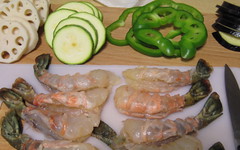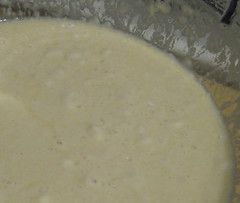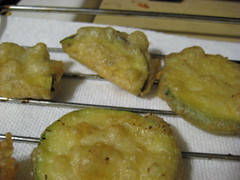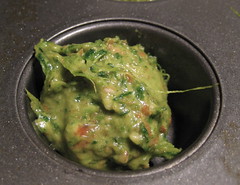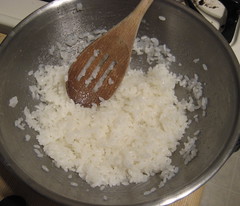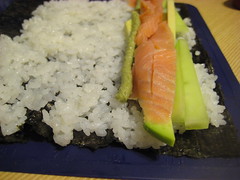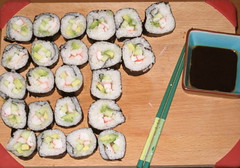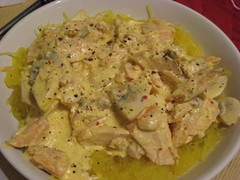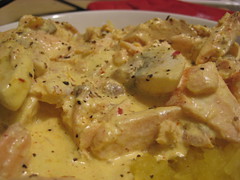A couple of months ago, when the chard in my garden was growing full steam ahead, I harvested what was probably about 2.5 lbs. worth. Now, by this point in the season, I was getting a little sick of chard to be quite honest, so I kept having to find new ways of using it. Since it was close to the end of the month, a time when I generally cut-off my grocery shopping as a means to force clean out my fridge and cabinets, I had limited provisions on hand. Like most, I have a group of staples that I always keep around, of which rice and whole canned tomatoes are a part of. I also have been keeping skinless turkey sausages in my freezer as they're rather utilitarian meat for a number of dishes. So, there it was, chard, rice, canned tomatoes, and turkey sausage... what the heck can you make with that?
Paella falsos:
1 33oz. can of whole peeled tomatoes
1 cup rice (any kind will do, I used long grain)
1-2 lbs. chard, washed
6 oz. skinless smoked turkey sausage
1-2 tbsp. olive oil
1-2 cloves garlic
salt and pepper to taste
1 tsp. coriander
pinch saffron
- Remove the stems and central rib from the chard and chop or tear into roughly 1 inch square pieces. Mince the garlic and heat the oil in a soup-pot till shimmering, then add in the chard, garlic, and coriander and cook for ~5 minutes.
- Add in the rice and ~1/4 tsp. salt and stir to coat each grain in oil. Pour the liquid from the tomatoes into a bowl and reserve. Seed and chop the tomatoes into small pieces. When the rice is translucent, pour in the tomatoes and juice. Bring the pot to a boil.
- Slice the sausage into small, bite-sized pieces. When the pot reaches a boil, add the sausage and the saffron and drop the heat to medium. Cook, uncovered, for a good 30 minutes, stirring occasionally. After 30 minutes, the mix should be thicker as the rice absorbs the tomato juice, adjust the final seasoning now while there's still some liquid left.
- Now, there are two ways to finish this. The first, as I did it the first time, is simply to keep heating it in the pot, creating a crusty bottom. Alternatively, you can transfer some to a non-stick skillet and achieve the same effect.
So, the reason I call this fake paella is simply because it's like paella in principle, but I certainly didn't plan it that way and no Spaniard would ever mistake this for the real thing. The end result, however, is a really delicious, tomatoey-savory rice dish wish a crusty bottom, so fake paella. I've made this a few times since its first accidental creation, and I haven't really made any changes to it yet. It may not look all that great, but do yourself a favor and try it, I think you'll be quite pleasantly surprised.
Well, that's all I have this time, I'm back to finishing a manuscript again, but I'll try to post again this coming weekend if I have time.
Cheers,
Mike :)


